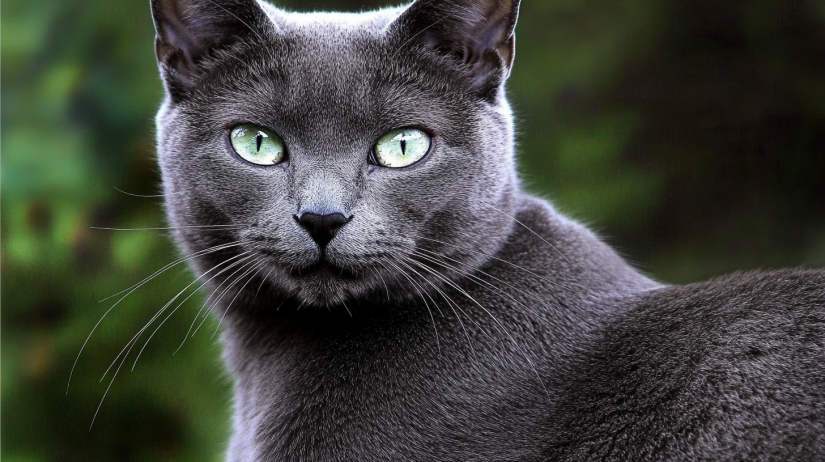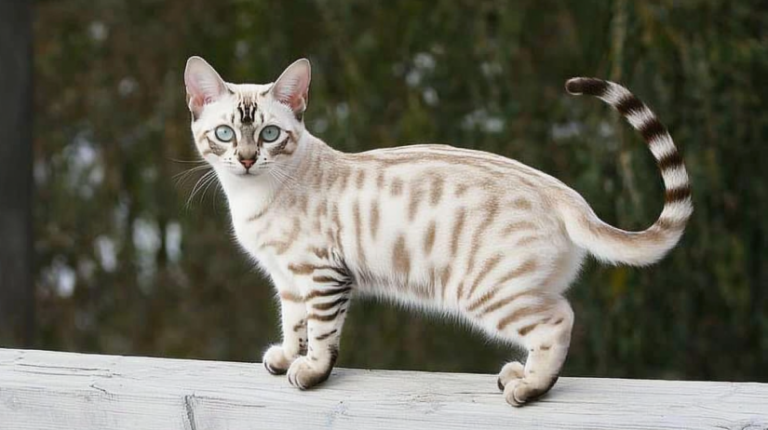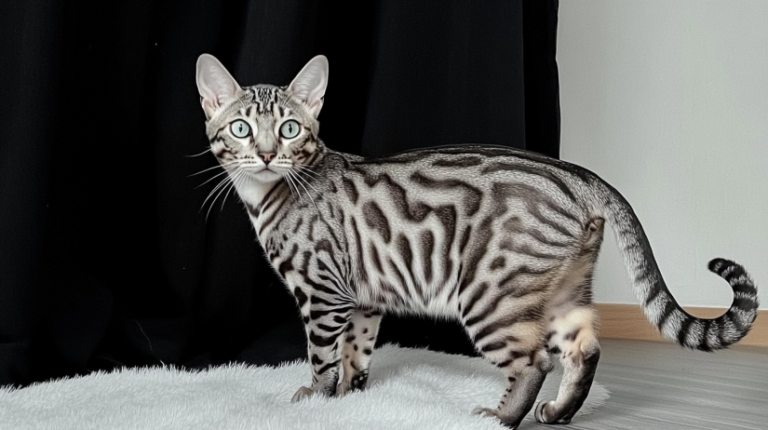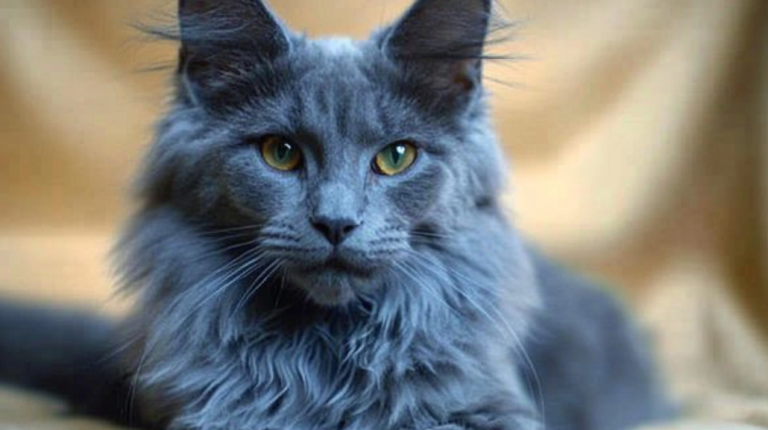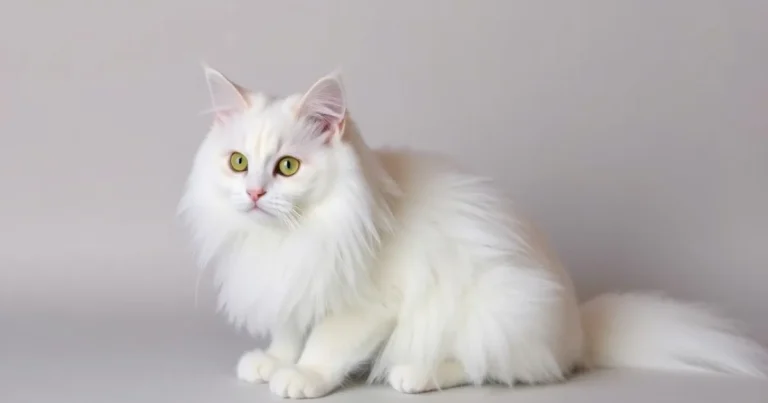Russian Blue Cat: Surprising Secrets Revealed (5 Shocking Facts!)
Introduction
It’s not every day you encounter a pet as captivating as the Russian blue cat. From their shimmering blue-gray fur to their wide, expressive eyes, these majestic felines have an air of quiet confidence—yet remain playful at heart. If you’ve ever been curious about why so many cat lovers go head over heels for the Russian blue cat, you’re in for a treat.
In this in-depth guide, you’ll explore all the fundamental aspects of the Russian blue cat—from their intriguing origins to the best ways to keep them purring happily. Prepare to dive into comprehensive, expert-backed information that not only addresses your most pressing questions, but also reveals fun tidbits to make you fall more in love with this exceptional breed.
Whether you’re considering adopting a Russian blue cat or already share your home with one, you’ll walk away with valuable insights, playful anecdotes, and practical tips for being the best caretaker possible. After all, who can resist that plush, silvery coat and that gentle, observant gaze? Let’s get started on this journey into the wonderful world of the Russian blue cat.
Here is a table summarizing the overview of the Russian Blue Cat:
| Attribute | Details |
|---|---|
| Official Name | Russian Blue |
| Common Name | Russian Blue Cat |
| Pet Height | 10–12 inches (25–30 cm) |
| Pet Weight | 7–15 pounds (3–7 kg) |
| Lifespan | 15–20 years |
| Smartness Level | Very High |
| Engagement in Play | Highly Active |
| Human-Friendly | Affectionate but Reserved |
| Animal-Friendly | Friendly with Proper Socialization |
| Favorite Food | High-quality protein-based food, fish, and chicken |
Key Takeaways
- Distinctive Appearance: The Russian blue cat is known for its lustrous silver-blue fur and striking green eyes.
- Balanced Personality: They’re affectionate yet independent, making them great companions for both families and individuals.
- Health Maintenance: Proper diet, regular vet checkups, and grooming ensure a healthy, long life (often 15–20 years).
- Moderate Activity: Interactive toys and vertical spaces keep this moderately active cat fit and mentally engaged.
- Introvert-Friendly: While friendly, a Russian blue cat often needs gentle introductions to new people or pets.
The Allure of the Russian Blue Cat
A Breeding Mystery Wrapped in Elegance
The Russian blue cat is said to have first appeared in the port city of Arkhangelsk, Russia. Legends suggest these cats traveled on ships with sailors, eventually making their way to other parts of Europe—particularly England—during the 19th century. Although official documentation is sparse, most cat experts agree that Russia’s cold climate and natural selection contributed to the Russian blue cat’s thick double coat and robust constitution.
Various cat associations, including the Cat Fanciers’ Association (CFA) and the International Cat Association (TICA), officially recognize the Russian blue cat as a breed. Their standards typically emphasize the cat’s silky, blue-gray coat, vibrant green eyes, and a wedge-shaped head. According to these reputable organizations, the Russian blue cat’s body should appear slender yet muscular, hinting at both grace and athleticism.
A Silvery-Blue Coat Like No Other
One of the most remarkable features of the Russian blue cat is undoubtedly its dense, plush fur. Each hair contains bands of pigment at the tips, giving the coat a soft, silvery sheen that’s quite unlike other cat breeds. When the cat moves, the light plays upon this reflective layer, making it seem as though the cat is glowing from within.
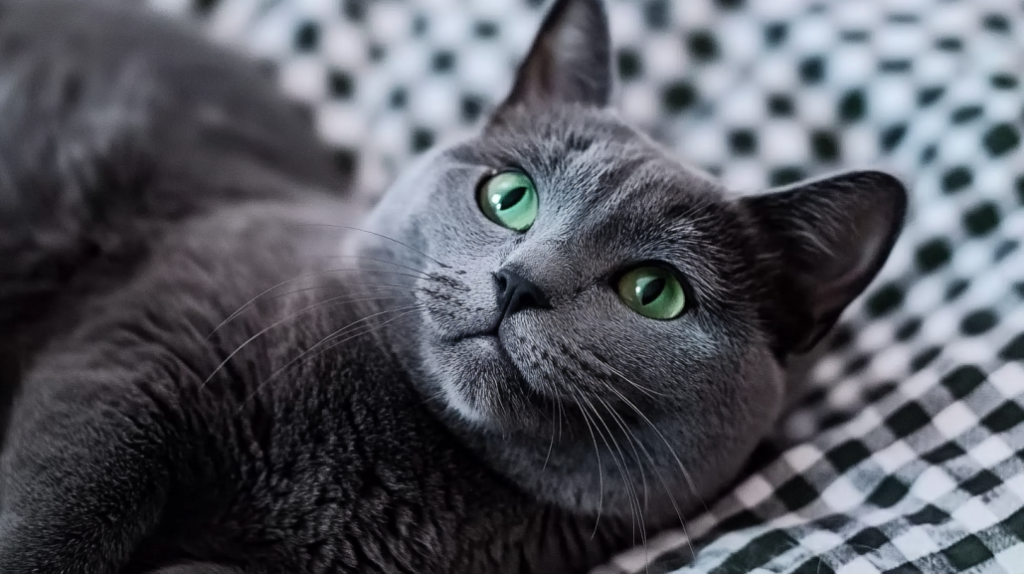
In many countries, people erroneously think the Russian blue cat must always have a “solid blue” appearance. However, upon closer inspection, you’ll see that the fur often has faint tabby markings as a kitten, which vanish over time. This radiant sheen is part of what sets the Russian blue cat apart from other “blue” cat breeds, such as the Korat or the British Shorthair.
Personality That Balances Playfulness and Poise
Beyond their eye-catching exterior, the Russian blue cat has a surprisingly balanced temperament. They’re often described as affectionate but not overly needy, intelligent yet not mischievous, and playful without being hyperactive. If you give your Russian blue cat a fun puzzle toy or a feather wand to chase, you’ll likely see them spring into action with swift, graceful moves.
Studies in feline behavior from reputable sources like the American Veterinary Medical Association (AVMA) have shown that mentally stimulating play helps keep a cat’s brain sharp. Given that the Russian blue cat ranks among the more clever cat breeds, they tend to relish puzzle feeders, treat-dispensing gadgets, and interactive toys. If you engage them regularly, you’ll promote both physical exercise and mental agility.
Physical Traits and Health Considerations
Below is a helpful table summarizing the typical physical traits and average health metrics of the Russian blue cat, based on data compiled from multiple breeder and veterinarian sources:
| Trait | Russian Blue Cat |
|---|---|
| Adult Weight | 7–12 lbs (3–5.5 kg) |
| Adult Height | 9–11 inches (23–28 cm) |
| Lifespan | 15–20 years |
| Coat | Short, dense, plush; silver-blue with a shimmering sheen |
| Eye Color | Green (often starts as yellowish, transitions to vivid green) |
| Common Health Issues | Obesity, dental disease, urinary tract issues |
| Energy Level | Moderate, with spurts of playful enthusiasm |
| Grooming Needs | Weekly brushing, nail trims, dental check-ups |
Health Concerns and Preventive Care
While the Russian blue cat is generally robust, it isn’t entirely immune to health problems. Some of the more common concerns include obesity, which can occur if the cat has unlimited access to high-calorie food and lacks exercise. A genetic predisposition doesn’t typically exist for obesity in Russian blues, but their laid-back nature can mean they burn fewer calories than more hyperactive breeds.
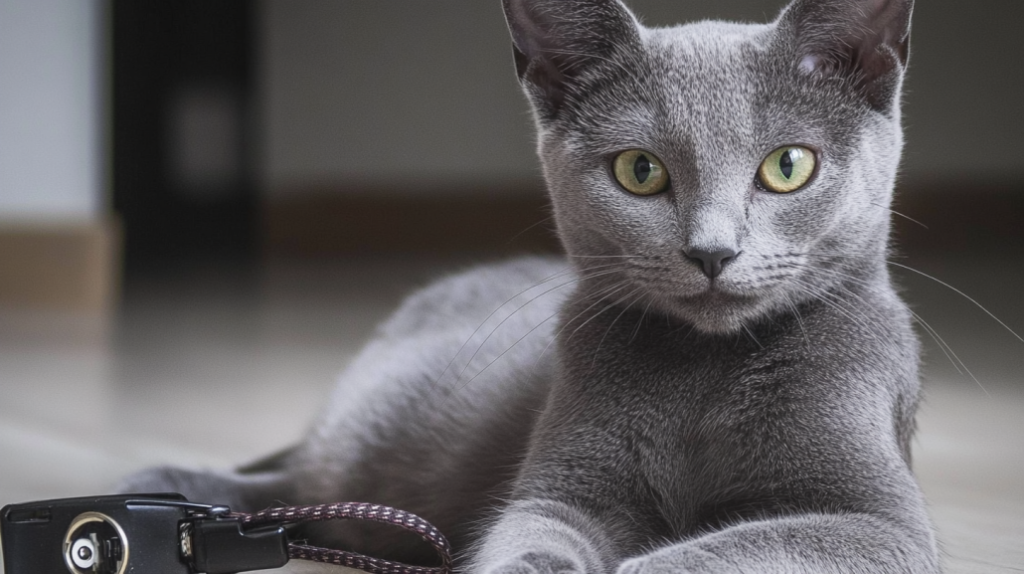
In addition, routine dental care is crucial. The American Animal Hospital Association (AAHA) suggests brushing your cat’s teeth at least a few times a week—if not daily—to minimize plaque buildup. Regular veterinary visits, especially annual or semiannual checkups, are indispensable for early detection of health issues. Always consult a licensed veterinarian before making any changes to your Russian blue cat’s diet, exercise routine, or medical plan—this article is for informational purposes only and does not replace professional advice.
Grooming: Low Maintenance but High Reward
Due to their short, dense coat, a Russian blue cat requires relatively simple grooming. A quick brush once or twice a week will help remove loose fur, minimize shedding, and keep the coat glowing. Some Russian blues develop a fondness for grooming sessions, associating the brush with positive attention and bonding time.
Occasional nail trims, ear cleaning, and routine checkups further ensure your cat’s well-being. If your Russian blue cat seems uneasy about grooming activities, try offering treats and gentle praise to build a positive association. Over time, you’ll likely find that your cat cooperates—or even looks forward to—a quick brush or comb-through.
Care Tips for a Happy, Healthy Russian Blue Cat
Nutrition and Feeding Guidelines
Feeding your Russian Blue good-quality cat food supports their health and long life. Look for foods that list a real meat source (e.g., chicken, turkey, salmon) as the first ingredient, and avoid formulas with excessive fillers or artificial additives. Some cat owners opt for grain-free diets, but studies vary on whether grain-free is inherently superior. What matters most is that your cat’s nutritional needs—high protein, moderate fat, essential vitamins—are met.
Portion control is also vital. Overfeeding may result in obesity and related health problems. According to reports from the Association for Pet Obesity Prevention, 60% of cats. are overweight or obese, a number that includes many purebred cats. By measuring out your Russian blue cat’s meals and limiting treats, you can help maintain a healthy body weight. Don’t forget to hydrate your cat with fresh water to support their health.
Exercise and Enrichment
Just because the Russian blue cat is relatively calm doesn’t mean they enjoy being couch potatoes 24/7. They benefit greatly from regular interactive play sessions. Feather wands, laser pointers, and puzzle toys can all work wonders in coaxing out your cat’s playful side. Make sure to rotate toys to keep the novelty factor high—just like people, cats can get bored with the same old routine.
If you live in a small apartment or have limited space, consider vertical enrichment. Cat trees, wall-mounted shelves, and window perches allow your Russian blue cat to explore heights safely. Engaging their climbing instincts helps relieve boredom and provides opportunities for low-impact exercise.
Safe Outdoor Exploration—If Possible
Some cat owners allow their Russian blue cats supervised outdoor time. If you choose to do this, ensure the environment is safe: a secure yard or a catio (cat patio) can keep your cat protected from traffic, predators, and contagious diseases. Always outfit your Russian blue cat with a properly fitted harness and leash if you plan to take them beyond enclosed spaces. Keep them up-to-date on vaccinations and flea/tick prevention before any outdoor excursions, as recommended by your veterinarian.
Social Dynamics and Behavioral Insights
Russian Blue Cat: Affectionate Yet Independent
Among cat enthusiasts, the Russian blue cat is often celebrated for its affectionate yet independent streak. These cats typically form strong bonds with one or two family members, offering gentle headbutts and purring sessions to those they trust. They may be slower to warm up to strangers, but once your Russian blue cat feels comfortable, you can expect a sweet companion who thrives on occasional cuddle time.
Because they value their personal space, Russian blues rarely become clingy. They’re often quite content watching the household bustle from a cozy perch. When they decide it’s time for attention, they’ll approach you for some petting or a quick game of chase-the-toy. This balanced dynamic makes them well-suited to households that appreciate both companionship and peaceful autonomy.
Are They Good with Other Pets and Children?
Thanks to their generally mild-mannered disposition, the Russian blue cat can coexist with other pets—especially if introduced properly. A slow introduction process, using scent swapping and controlled encounters, is best. With dogs, it’s crucial to choose a canine companion who respects the cat’s boundaries.
As for children, the Russian blue cat typically does well with polite, gentle kids who know how to interact respectfully. Because these cats can be somewhat sensitive to loud noises and sudden movements, it’s wise to supervise interactions at first. Teaching children how to approach, pet, and handle the cat can foster a harmonious relationship.
Quiet Observer or Chatty Companion?
If you’re looking for a feline that doesn’t meow your ear off, you’ll likely appreciate the moderate vocal tendencies of the Russian blue cat. Though not entirely silent, Russian blues usually have soft, gentle voices. They may “talk” to you occasionally—especially if they’re hungry or excited—but rarely do they become as vocal as, say, a Siamese cat.
However, each cat is an individual, so don’t be surprised if your Russian blue cat turns out to be chattier than the breed standard suggests. Pay attention to your cat’s nonverbal cues—such as purring, tail position, or ear movement—to gauge their mood and needs.
Call to Action: Creating a Nurturing Environment
Caring for a Russian blue cat involves more than just providing food and shelter. Your job as a cat guardian is to offer a loving, engaging environment. Try to integrate short daily play sessions, mental enrichment through toys and puzzles, and regular grooming to strengthen your bond.
If you’re ready to dig even deeper into cat care, you might explore valuable resources on this dedicated cat webpage to gain additional insights. By choosing a Russian blue cat, you’re committing to a long, fulfilling companionship that promises gentle affection, dignified presence, and daily moments of joy.
Frequently Asked Questions (FAQs)
Below are some commonly asked questions about the Russian blue cat—rewritten in two forms each, along with concise, 3-sentence answers. Every answer is ≤300 characters and includes the focus keyword “Russian blue cat.”
1. Is the Russian Blue cat expensive?
Reworded: Does a Russian blue cat cost a lot to own?
A Russian blue cat can be pricey due to breeding standards and high demand. Adoption fees vary based on lineage and reputation of the breeder or rescue. Investing in a Russian blue cat also includes ongoing costs like quality food, vet care, and enrichment.
2. Are Russian Blues aggressive?
Reworded: Do Russian Blue cats show aggression?
A Russian blue cat is known for its calm demeanor, not aggression. They typically avoid conflict and prefer retreat over confrontation. Proper socialization ensures a well-adjusted Russian blue cat with minimal aggression issues.
3. Why are Russian Blue cats so special?
Reworded: What makes the Russian Blue cat stand out?
The Russian blue cat boasts a captivating silver-blue coat, bright green eyes, and a gentle temperament. They’re also highly intelligent and often bond closely with their owners. This blend of elegance and affection sets the Russian blue cat apart.
4. Can Russian Blue be left alone?
Reworded: Is it okay to leave a Russian blue cat by itself?
A Russian blue cat handles solitude better than some breeds, thanks to its independent streak. However, leaving any cat alone for extended periods can lead to boredom or anxiety. Provide enough stimulation, toys, and social interaction to keep your Russian blue cat content.
5. Do Russian Blue cats talk a lot?
Reworded: Are Russian Blue cats vocal?
A Russian blue cat is moderately vocal and usually quite soft-spoken. They meow to communicate needs but aren’t overly chatty like some other breeds. Each Russian blue cat has its unique personality, so vocal habits can vary.
Conclusion
A Russian blue cat might appear reserved at first glance, but beneath that poised exterior lies a devoted, loving companion that can transform your home into a haven of calm and comfort. From their shimmering silver-blue coat to their observant, intelligent nature, Russian blues have earned their reputation as one of the cat world’s true treasures.
Adopting and caring for a Russian blue cat means more than just bringing home a pet; it means welcoming a gentle, soulful presence who can add warmth and grace to your daily life. Whether you’re an experienced cat lover or a first-time adopter, the Russian blue cat’s balanced temperament, elegant appearance, and playful spirit will capture your heart. Feel free to share your thoughts or anecdotes in the comments below—your experiences can help fellow Russian blue cat enthusiasts discover the beauty of this wonderful breed.
Trustworthy External Link
For further reading on cat care and adoption, visit American Humane to explore reputable tips on how to provide the best environment for your cat.

